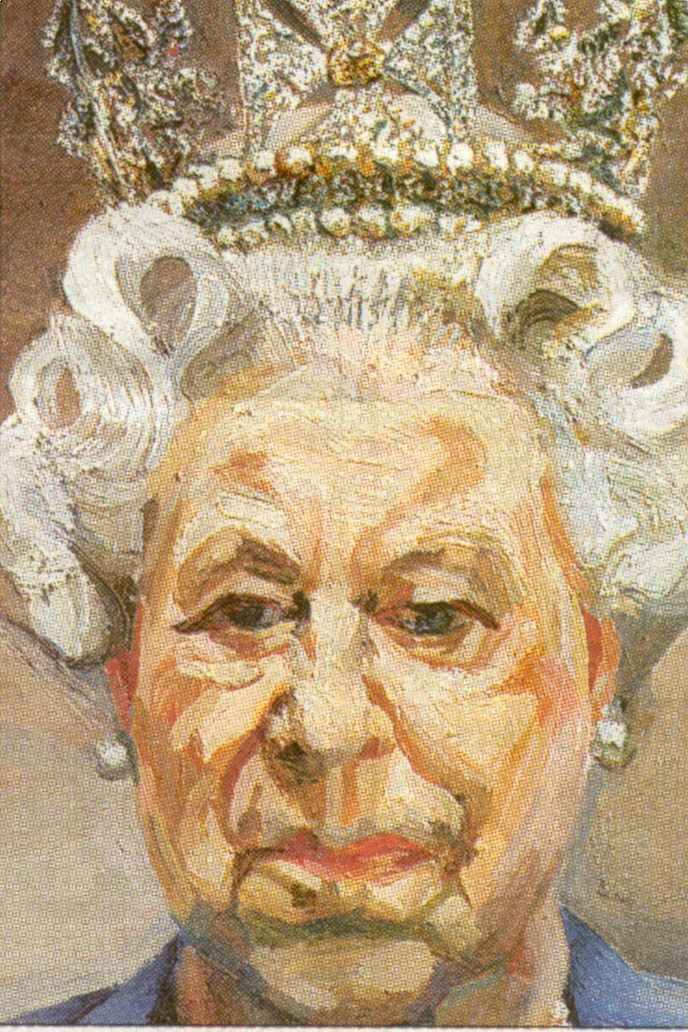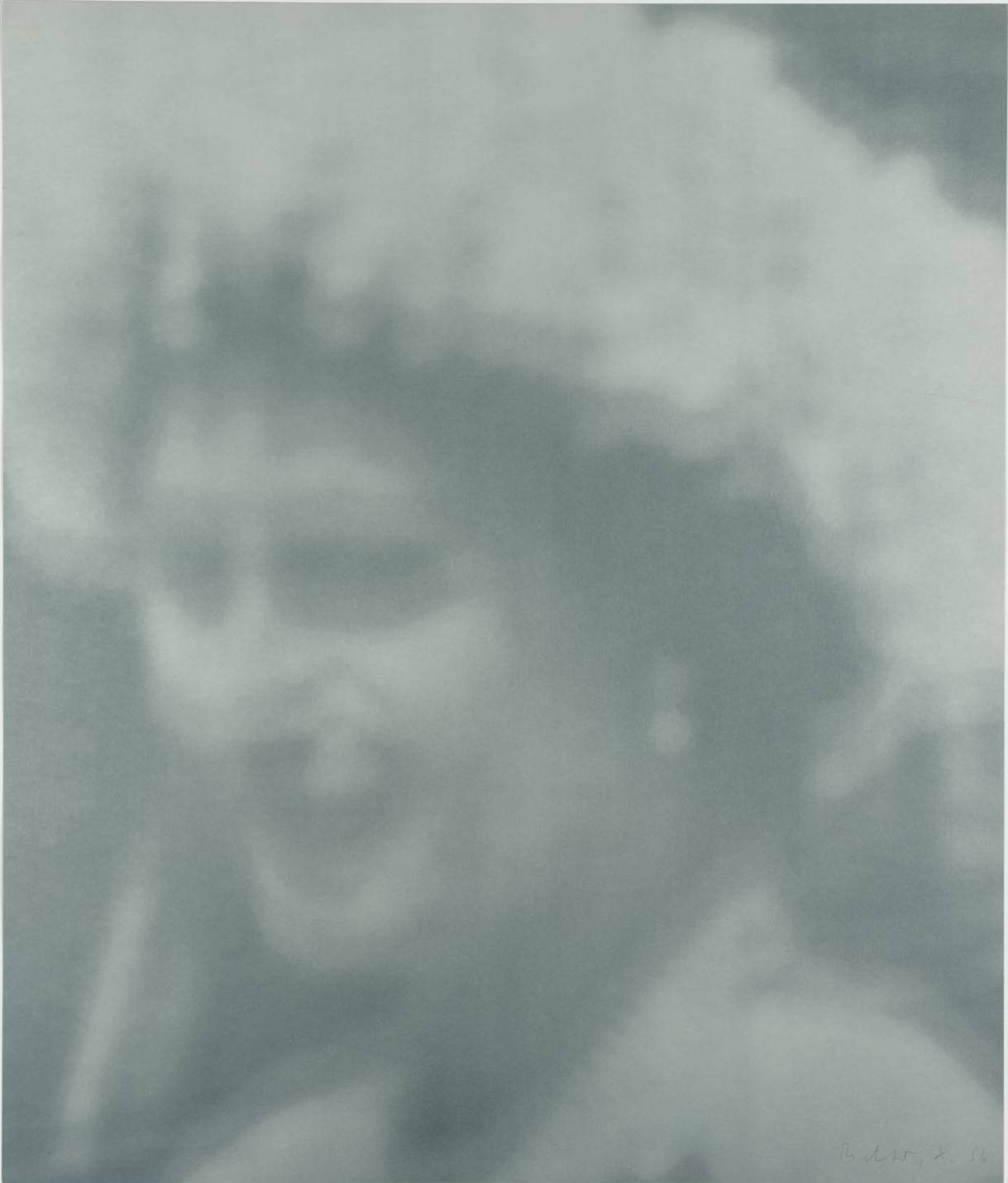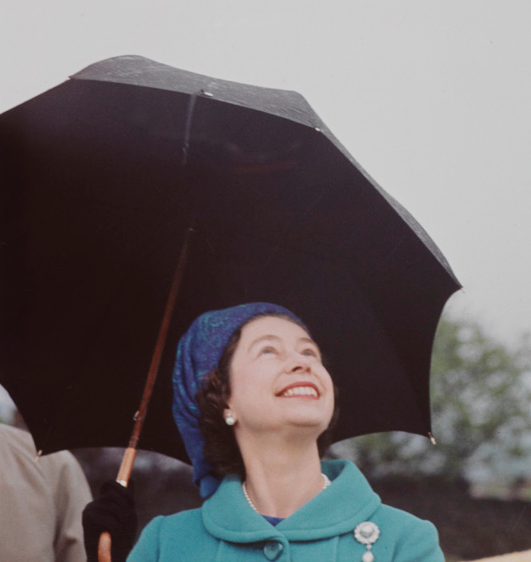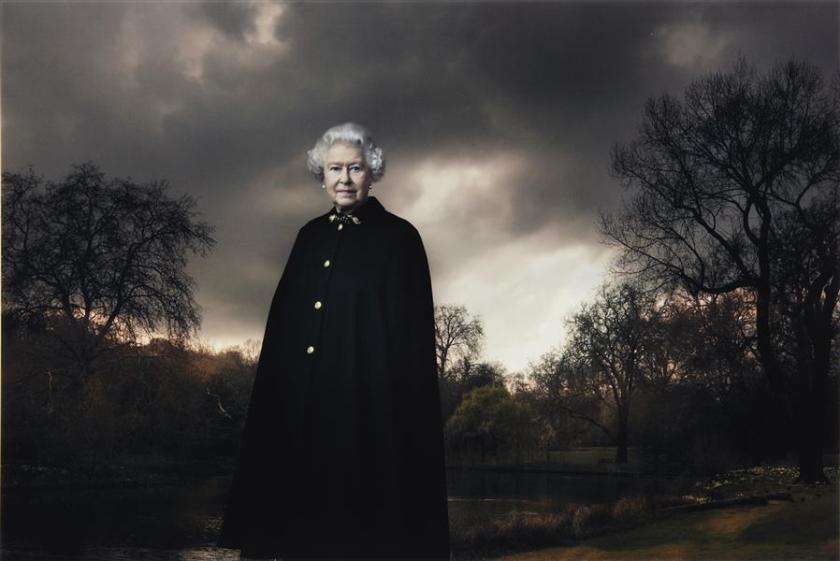The Queen is the first mass-media monarch, and still probably the most ubiquitously depicted person in history. Her 60 years on the throne is only exceeded by Victoria, and her reign has coincided, of course, with photography, film and television. The profusion of royal imagery is exaggerated and exacerbated by the cult of celebrity and the new technology of the internet and social networking. This has led to an overwhelming sense that the public has the right to know the most intimate details of the lives of public figures.
The Queen however has, one way or another, escaped the worst excesses of the vitriolic glee that has accompanied criticisms of other members of her family. This exhibition charts a meandering journey from reverence (and even the hyperbole of a New Elizabethan Age) to a realisation of an expensive remoteness, to a dangerous irrelevance, a growing republicanism, anger, and finally to a kind of personal affection for the Queen herself, if not all the members of her extended family.
The exhibition has already visited the three other capitals of her fractiously united kingdom – Cardiff, Belfast and Edinburgh – and has not been compiled by courtiers, although we are given to understand that the royal household is pleased. And so they should be, for its fascination lies in its very impenetrability, in that Churchillian phrase, "a riddle wrapped in a mystery inside an enigma" – and protected by an overwhelming blandness.
 This is not a sharp-eyed view, or an anthology with a cutting edge: the nearest we get is a small glass case, the contents of which show the extremes of royal imagery: stamps which feature the stylised official use of the royal image, and a couple of Private Eye covers with their mild frisson of anti-establishment public-school satire. But otherwise we are not given any sense of how the imagery has been used, from the royal household’s Christmas cards to the pages of the tabloids and the thousands of postcards. The catalogue (£20) does however contain analytical essays by the historian David Cannadine, also chair of the NPG trustees, and the clever curator, Paul Moorhouse, reproduces at least one image from Spitting Image, and offers a sharp chronology which unpretentiously charts the ups and downs of royal imagery in conjunction with the waxing and waning of royal popularity.
This is not a sharp-eyed view, or an anthology with a cutting edge: the nearest we get is a small glass case, the contents of which show the extremes of royal imagery: stamps which feature the stylised official use of the royal image, and a couple of Private Eye covers with their mild frisson of anti-establishment public-school satire. But otherwise we are not given any sense of how the imagery has been used, from the royal household’s Christmas cards to the pages of the tabloids and the thousands of postcards. The catalogue (£20) does however contain analytical essays by the historian David Cannadine, also chair of the NPG trustees, and the clever curator, Paul Moorhouse, reproduces at least one image from Spitting Image, and offers a sharp chronology which unpretentiously charts the ups and downs of royal imagery in conjunction with the waxing and waning of royal popularity.
What is dispiriting about the exhibition as a whole is the lack of any imaginative vision on the part of most of the artists, whether photographers or painters. The imagery becomes almost cloyingly repetitive, and much is almost unremittingly mediocre. Even the names seem defeated, with the Warhols (1985) prettily decorative, lifting banality to new heights without any ironic seasoning. The Annie Leibovitz photograph, taken in 2007 (main picture), costumes the Queen in an echo of the Admiral’s cloak that is such a feature of the 1955 Annigoni full-length portrait. Leibovitz sets her subject in what appears to be a piece of woodland about to be engulfed by an oncoming storm in a strained search for something new to say or show about her subject, and settles for a mindless melodrama.
 Much is made of the fact that both the Annigoni full length of 1955 and 1969 are shown together for the first time: both are slick and icy, and the touch of melancholy that might have lifted the regal expression into something evoking empathy just looks as though Her Majesty were suffering from indigestion. The tiny Lucian Freud (pictured previous page) gives us the Queen looking cross, her face all rumpled up like a badly folded handkerchief, mildly ludicrous and wholly unconvincing.
Much is made of the fact that both the Annigoni full length of 1955 and 1969 are shown together for the first time: both are slick and icy, and the touch of melancholy that might have lifted the regal expression into something evoking empathy just looks as though Her Majesty were suffering from indigestion. The tiny Lucian Freud (pictured previous page) gives us the Queen looking cross, her face all rumpled up like a badly folded handkerchief, mildly ludicrous and wholly unconvincing.
The early and perhaps more straightforward practitioners of the royal genre, the photographers Cecil Beaton and Dorothy Wilding, well convey their own delighted pleasure at portraying a very handsome young woman who happens to be the new Queen: showing her regal status to the best of their ability was a task worth doing.
And occasionally a distinguished artist rises, unasked, to the challenge. Gerhard Richter’s 1966 lithograph (pictured right), based on a photograph which he has blurred and manipulated with varying tones of grey, conveys a sense of ambiguous and ambivalent unease, using his own well-known idiom to striking effect. Another provocatively thoughtful image is Hiroshi Sugimoto’s black-and-white photograph of the Queen literally as waxwork, the rather crass effigy at Madame Tussaud’s being his subject.
 So there are some provoking and thoughtful works among the dross, but in the main the attempts to modernise are embarrassing, and the reportorial – Eve Arnold (pictured left: The Queen, 1968), Dylan Martinez, or those images credited to the Press Association – remain the most effective. Unlike the images of the monarchy from Van Dyck to Zoffany to even – yes - Winterhalter, there will be little of memorable artistic distinction in the Elizabethan legacy.
So there are some provoking and thoughtful works among the dross, but in the main the attempts to modernise are embarrassing, and the reportorial – Eve Arnold (pictured left: The Queen, 1968), Dylan Martinez, or those images credited to the Press Association – remain the most effective. Unlike the images of the monarchy from Van Dyck to Zoffany to even – yes - Winterhalter, there will be little of memorable artistic distinction in the Elizabethan legacy.
- The Queen: Art and Image at the National Portrait Gallery until 21 October









![SEX MONEY RACE RELIGION [2016] by Gilbert and George. Installation shot of Gilbert & George 21ST CENTURY PICTURES Hayward Gallery](/sites/default/files/styles/thumbnail_125_x_125_/public/mastimages/Gilbert%20%26%20George_%2021ST%20CENTURY%20PICTURES.%20SEX%20MONEY%20RACE%20RELIGION%20%5B2016%5D.%20Photo_%20Mark%20Blower.%20Courtesy%20of%20the%20Gilbert%20%26%20George%20and%20the%20Hayward%20Gallery._0.jpg?itok=3oW-Y84i)





Add comment